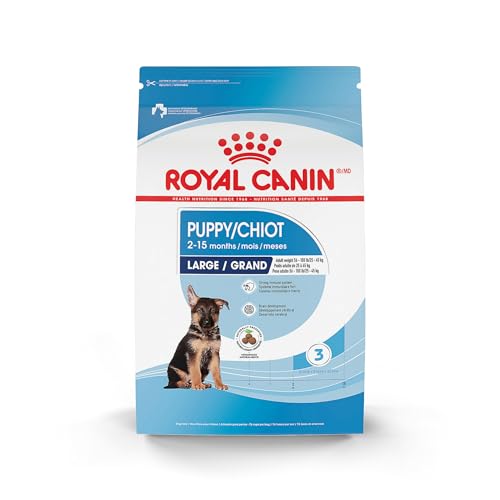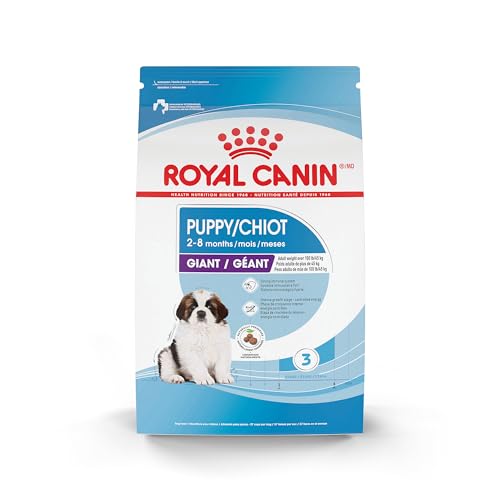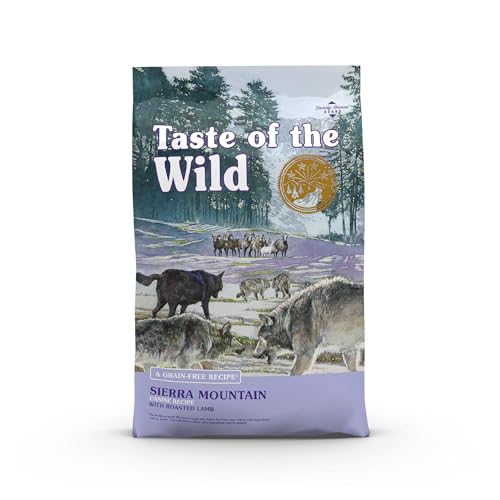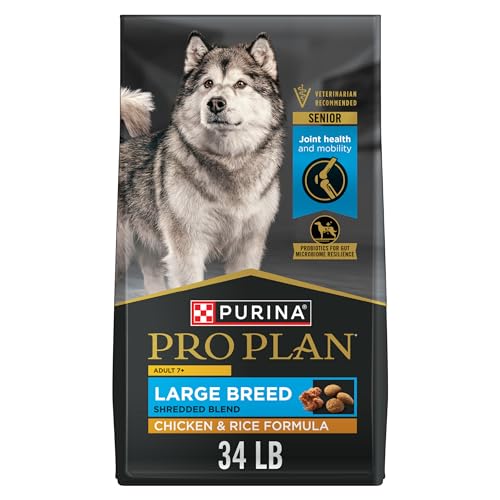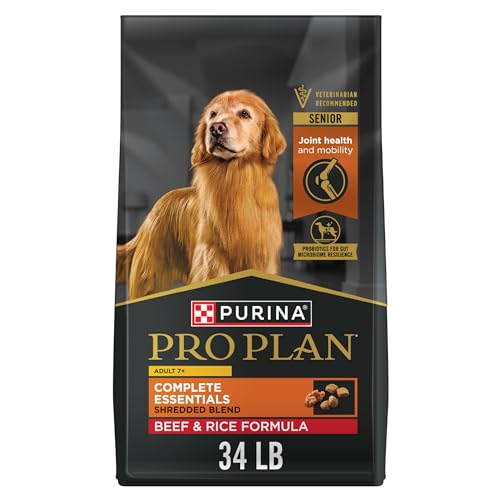There’s something truly special about sharing your life with a large breed dog. Whether it’s the goofy lean of a Great Dane, the boundless energy of a Golden Retriever, or the gentle guardianship of a Bernese Mountain Dog, these gentle giants leave a massive paw print on our hearts. But their impressive size brings a unique set of health considerations, and it all starts with what you put in their bowl. The reality is, their rapid growth and sheer body weight present distinct challenges for their bones, joints, and overall health. That’s why choosing the best dog food for large breeds isn’t just about feeding them more—it’s about feeding them right.
The wrong nutrition during their critical growth phases can lead to lifelong problems, while the right food can set them up for a long, vibrant, and healthy life. This guide will cut through the confusing labels and marketing claims to give you a clear, confident understanding of exactly what your large breed needs to thrive, from their clumsy puppy days all the way through their dignified senior years.
The Unique Nutritional Needs of Large Breed Dogs
It’s a common mistake to think that large breed dogs simply need a bigger serving of standard dog food, but the process of choosing the best dog food for large breeds involves much more than portion size. Their nutritional requirements are fundamentally different, tailored to support their unique physiology and mitigate common health risks associated with their size.
Controlled Growth for Healthy Bones & Joints
For a large breed puppy, growing too fast is a real danger. While it might seem impressive for your German Shepherd puppy to bulk up quickly, rapid growth puts immense strain on their developing skeletal system. This can lead to serious and painful conditions like osteochondritis dissecans (OCD) and other developmental orthopedic diseases.
According to VCA Animal Hospitals, “Nutritional management is the most important factor in a growing large breed dog.” The key is a diet specifically formulated for “large breed puppies.” These formulas contain precisely controlled levels of calcium and phosphorus. Too much calcium can accelerate bone growth unnaturally, leading to malformations. The ideal food ensures their bones develop at a steady, controlled pace, allowing them to grow strong and resilient.
Lifelong Joint Support
Large breeds are genetically predisposed to joint issues like hip dysplasia, elbow dysplasia, and arthritis later in life. Every pound of body weight exerts significant force on their joints, and years of running, jumping, and playing can take their toll.
This is why proactive nutritional support is non-negotiable, making it a critical factor when choosing the best dog food for large breeds. Look for dog foods fortified with glucosamine and chondroitin sulfate. These compounds are the building blocks of healthy cartilage, the flexible tissue that cushions the joints. Feeding a diet rich in these supplements from a young age helps maintain joint integrity and can delay the onset or reduce the severity of arthritis. For example, a Labrador Retriever prone to hip issues will benefit immensely from a diet that actively supports their joint health long before any symptoms appear.
Maintaining a Healthy Weight & Lean Muscle
Keeping a large breed dog at a lean, healthy weight is one of the most important things an owner can do for their longevity. Even a few extra pounds can dramatically increase the strain on their joints and vital organs. A 2002 study published in the Journal of the American Veterinary Medical Association found that dogs maintained on a lean body condition lived, on average, nearly two years longer and showed a later onset of chronic diseases.
To achieve this, their diet needs to be rich in high-quality animal protein to build and maintain lean muscle mass. Muscle helps support and stabilize the joints. Additionally, an ingredient called L-carnitine is often added to large-breed formulas. It plays a crucial role in converting fat into energy, helping to prevent obesity and keep your dog’s metabolism working efficiently.
Preventing Bloat (Gastric Dilatation-Volvulus)
Gastric Dilatation-Volvulus (GDV), or bloat, is a life-threatening condition that disproportionately affects large, deep-chested breeds like Great Danes, Weimaraners, and Standard Poodles. It occurs when the stomach fills with gas and twists on itself, cutting off blood flow. While the exact cause is multifactorial, feeding highly digestible ingredients can promote good gut health and potentially reduce the risk. Choosing a food with whole, recognizable ingredients and avoiding cheap fillers can contribute to a healthier digestive system.
Key Ingredients to Look For When Choosing the Best Dog Food for Large Breeds
When you’re standing in the pet food aisle, the ingredient list is your most powerful tool. Learning to decipher it will empower you to make the best choice for your dog. Here’s what to prioritize:
- High-Quality Animal Protein: The first ingredient should always be a named animal source.
- Excellent sources: Deboned chicken, lamb, turkey, fish (like salmon or whitefish), or meals made from these (e.g., chicken meal). “Meal” is a concentrated protein source and is a great ingredient.
- What to avoid: Vague terms like “meat and bone meal” or “animal by-products,” which can be from inconsistent and lower-quality sources.
- Joint-Supporting Supplements: As mentioned, these are essential.
- Must-haves: Glucosamine and chondroitin sulfate. They should be clearly listed on the ingredient panel or in the “guaranteed analysis” section.
- Healthy Fats (Omega Fatty Acids): Fats are a vital energy source and are critical for skin and coat health.
- Look for: Omega-3 and Omega-6 fatty acids from sources like fish oil (especially salmon oil), flaxseed, and chicken fat. Omega-3s are particularly valuable for their anti-inflammatory properties, which provide additional support for aging or overworked joints.
- Digestible Carbohydrates & Fiber: Carbohydrates provide energy and fiber aids in digestion.
- Good choices: Complex carbs like sweet potatoes, brown rice, peas, and oatmeal. These provide sustained energy without spiking blood sugar.
- Fiber sources: Pumpkin, carrots, and beet pulp help maintain regular bowel movements and a healthy gut.
- Ingredients to Avoid: Low-quality foods are often packed with cheap fillers that offer little nutritional value.
- Red flags: Corn, wheat, and soy are common allergens and can be difficult for some dogs to digest. Also, watch out for artificial colors, flavors, and preservatives like BHA, BHT, or ethoxyquin.
>> Read More: “How to Read a Dog Food Label Like a Pro (2025 Guide)“
Choosing the Best Dog Food for Large Breeds by Life Stage
A dog’s nutritional needs change dramatically as they age. A food designed for a puppy won’t be suitable for a senior, and vice-versa.
Food for Large Breed Puppies (Up to 18-24 months)
This is arguably the most critical nutritional period in your dog’s life. Always choose a food explicitly labeled “for large breed puppies.” This isn’t a marketing gimmick; these formulas are scientifically engineered for their unique needs. The focus is on controlled, steady growth. They have a lower fat content and a carefully balanced calcium-to-phosphorus ratio to prevent bones from growing too quickly. Furthermore, these formulas are often enriched with DHA, an omega-3 fatty acid found in mother’s milk, which is vital for healthy brain and eye development. Feeding a standard puppy food can be a disastrous mistake that leads to lifelong joint problems.
>> Read More: Best Large Breed Dog Food (2025): Top 10 Picks Reviewed
Popular Product Examples:
Just so you know: As a dedicated dog owner myself, I only recommend products I truly believe in. If you purchase through a link on this page, I may earn a small commission that helps me create more in-depth guides like this—at no extra cost to you. I really appreciate your support!
(Learn More)
Hill’s Science Diet Large Breed Puppy: Formulated with optimal levels of calcium for controlled bone growth and DHA from fish oil for brain health.
Royal Canin Large Puppy Dry Dog Food: Features a blend of antioxidants and vitamins to support the immune system and highly digestible proteins.
Purina Pro Plan Large Breed Puppy: High in protein from real chicken and fortified with live probiotics for digestive and immune health.
Food for Adult Large Breeds (2 – 6 years)
Once your large breed dog has reached their full skeletal maturity, their dietary focus shifts from growth to maintenance, and your strategy for choosing the best dog food for large breeds will shift as well. The goal now is to maintain their ideal body weight, support joint health, and fuel their daily activities. An adult large breed formula will have balanced levels of high-quality protein to maintain strong muscles, continued joint support from glucosamine and chondroitin, and a moderate calorie count to prevent weight gain. For instance, a very active adult German Shepherd will need a diet that can fuel their energy while a more sedentary Mastiff might need fewer calories to stay lean.
Popular Product Examples:
Blue Buffalo Life Protection Formula Large Breed Adult: Contains real meat, whole grains, and garden vegetables, plus their “LifeSource Bits” for antioxidant support.
Wellness Complete Health Large Breed Adult: Features a balanced blend of proteins, fats, and carbohydrates, with added glucosamine and chondroitin for joint support.
Taste of the Wild High Prairie Canine Formula: A grain-free option with novel proteins like bison and venison for active adult dogs.
Food for Senior Large Breeds (Over 6 years)
Large breeds are considered “senior” earlier than their smaller counterparts, often around 6 or 7 years of age. As they slow down, their metabolism changes, and they become more prone to obesity. A senior large breed formula is designed to address these changes. It typically contains:
- Fewer calories to help maintain a healthy weight.
- Increased fiber to promote digestive health.
- Higher levels of glucosamine and chondroitin to provide maximum support for aging, arthritic joints.
- Highly digestible proteins that are easier for an older dog’s system to process.
Popular Product Examples:
Purina Pro Plan Bright Mind Adult 7+ Large Breed: Formulated with enhanced botanical oils shown to promote alertness and mental sharpness in older dogs.
Hill’s Science Diet Adult 7+ Large Breed: Provides synergistic ingredients to support energy levels and contains high levels of glucosamine and chondroitin for joints.
Royal Canin Large Aging + Dry Dog Food: Designed with an adapted nutrient profile for the first signs of aging and features a specialized kibble that’s easy to rehydrate.
Wet Food vs. Dry Food (Kibble): What’s the Right Choice?
The debate between wet and dry food is a common one among dog owners, and it’s an important consideration when choosing the best dog food for large breeds. For large breeds, the decision often comes down to a balance of cost, convenience, and specific health benefits. There’s no single “right” answer, but understanding the pros and cons of each can help you decide what’s best for your gentle giant.
Benefits of Dry Food (Kibble)
For most large-breed owners, dry kibble is the foundation of their dog’s diet, and for good reason. It’s significantly more cost-effective, which is a major consideration when you’re feeding a dog that can eat several cups of food a day. Many large-breed formulas feature a larger kibble size, which encourages chewing rather than gulping, aiding digestion and satiety. The abrasive texture of kibble also helps to scrape away plaque and tartar, contributing to better dental hygiene over time.
Benefits of Wet Food
Wet or canned food has a much higher moisture content, which is excellent for keeping your dog hydrated. Its rich aroma and soft texture also make it incredibly palatable, making it a great choice for picky eaters or senior dogs who may have dental sensitivities or a diminished sense of smell. While feeding a large dog an exclusively wet food diet can be prohibitively expensive, it has its place.
The Mixed Feeding Approach
Many owners find a “best of both worlds” solution in mixed feeding. This involves using dry kibble as the main meal base and adding a spoonful of wet food as a topper. This approach enhances the meal’s flavor and moisture content, making it more appealing without breaking the bank. It’s an excellent way to give your dog the benefits of both food types.
| Feature | Dry Food (Kibble) | Wet Food |
|---|---|---|
| Cost | More economical | More expensive |
| Dental Health | Good; abrasive texture helps clean teeth | Neutral to poor |
| Convenience | Easy to store and serve | Requires refrigeration after opening |
| Hydration | Low moisture content | High moisture content |
| Palatability | Good | Excellent, best for picky eaters |
Common Large Breed Feeding Problems & Solutions
Beyond choosing the right food, proper feeding habits are crucial for the health and safety of your large breed dog. Addressing these common issues proactively can help you avoid serious problems down the road.
How to Prevent Bloat (GDV)
As mentioned, bloat is a medical emergency. While diet plays a role, management is key. Dr. Jerry Klein, Chief Veterinary Officer for the American Kennel Club (AKC), advises, “Owners of at-risk breeds should know the signs of bloat and have a plan in place with their veterinarian.” Here are practical steps to reduce the risk:
- Use a Slow-Feeder Bowl: These bowls have built-in obstacles that force your dog to eat more slowly, reducing the amount of air they swallow.
- Feed Smaller, More Frequent Meals: Instead of one large meal, split their daily portion into two or three smaller ones.
- Avoid Exercise Around Mealtimes: Restrict vigorous running and playing for at least an hour before and after they eat.
- Ensure Access to Water: Don’t let them gulp huge amounts of water right after a meal. Have fresh water available throughout the day.
Managing Weight and Preventing Obesity
It’s easy for a large dog’s weight to creep up, and managing their intake is a key part of choosing the best dog food for large breeds. Feeding guidelines on the bag are just a starting point; adjust the amount based on your dog’s age, metabolism, and activity level.
Learn to do a “body condition score.” You should be able to easily feel your dog’s ribs under a thin layer of fat, and they should have a visible “waist” when viewed from above. If you can’t find their ribs or their back is broad and flat, it’s time to consult your vet about a weight management plan.
How to Properly Transition to a New Food
Switching your dog’s food abruptly can lead to digestive upset like diarrhea or vomiting. The key is a slow, gradual transition over 7 to 10 days. This gives their gut bacteria time to adjust.
- Days 1-3: 75% old food, 25% new food
- Days 4-6: 50% old food, 50% new food
- Days 7-9: 25% old food, 75% new food
- Day 10: 100% new food
Conclusion: Investing in Your Gentle Giant’s Health
Choosing the best dog food for your large breed is one of the most significant investments you can make in their long-term health and happiness. By focusing on their unique needs, you’re not just filling their bowl—you’re building a foundation for strong bones, healthy joints, and a vibrant life. Remember the key takeaways: prioritize controlled growth for puppies, provide lifelong joint support through key ingredients like glucosamine, manage their weight carefully at every life stage, and select a formula that’s right for their age.
Your dog relies on you to make the best decisions for them. Armed with this knowledge, you can walk into any pet store with confidence.
Our strongest recommendation is to always discuss your dog’s specific dietary needs with your veterinarian. They can provide a personalized recommendation based on your dog’s breed, health status, and lifestyle.
Frequently Asked Questions (FAQ)
Is grain-free food better for large breed dogs?
Not necessarily. Unless your dog has a diagnosed grain allergy, there is no proven benefit to feeding a grain-free diet. In fact, the FDA has investigated a potential link between certain grain-free diets (especially those high in legumes) and a heart condition called dilated cardiomyopathy (DCM). Healthy whole grains like brown rice and oatmeal are excellent sources of energy.
How much should I feed my large breed dog?
While choosing the best dog food for large breeds is the first step, portion control is just as important. Start with the feeding chart on the food bag as a guideline, but adjust as needed. The right amount depends on your dog’s age, weight, activity level, and metabolism. The best way to know is to monitor their body condition; you want them to be lean, not overweight.
Can I give my large breed puppy adult dog food?
No, this is not recommended. Adult dog food lacks the specific, carefully balanced ratios of calcium and phosphorus required for a large breed puppy’s controlled growth. Feeding adult food can cause them to grow too quickly, leading to a high risk of developmental orthopedic diseases.
What are the best protein sources for large breed dogs?
When choosing the best dog food for large breeds, protein should be your top priority. Look for high-quality, named animal proteins like deboned chicken, lamb, turkey, salmon, or whitefish. Concentrated protein “meals” (like chicken meal) are also excellent. Avoid vague ingredients like “meat by-products.”
How do I know if my large breed is overweight?
You should be able to easily feel (but not see) their ribs, and they should have a visible, tucked-up waist when viewed from the side and from above. If their abdomen is straight or hangs down, and you cannot feel their ribs without pressing hard, they are likely carrying excess weight.
Send Us a Message
For all other inquiries, please use the form below. We look forward to hearing from you!



